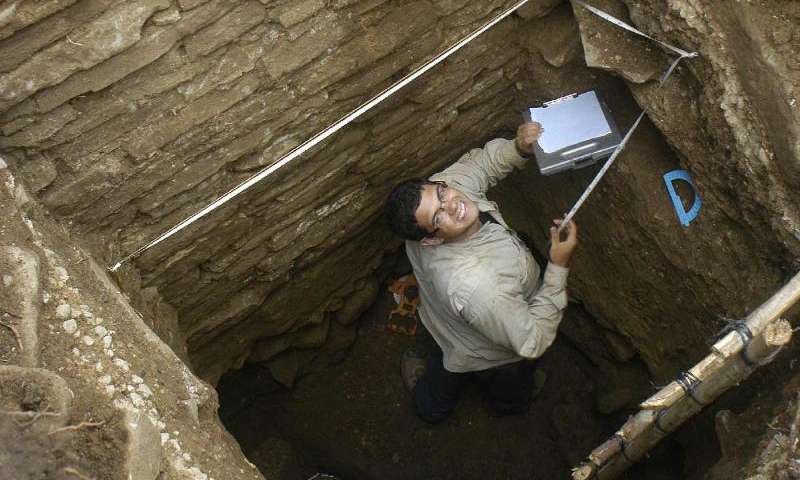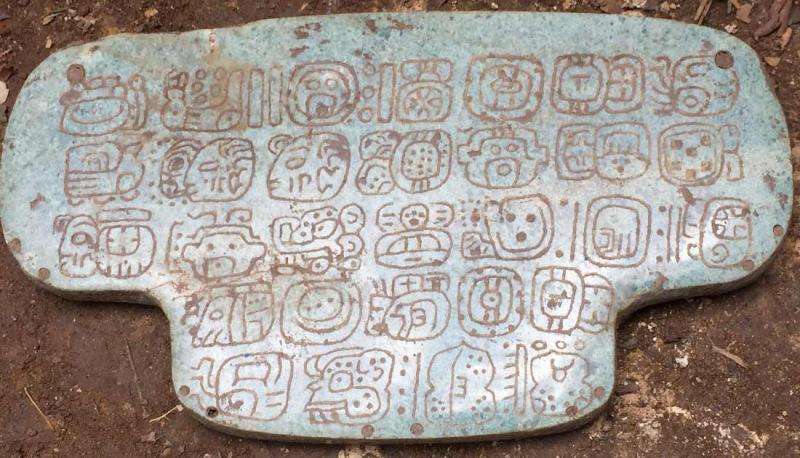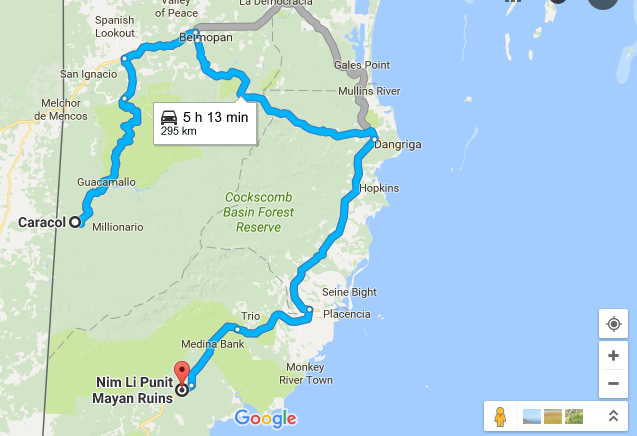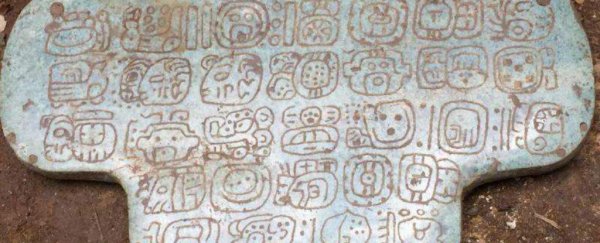Researchers have just published a paper on one of the most fascinating and mysterious Maya discoveries in recent years - a huge jade pendant that has a detailed story about the king it was made for etched into its back.
First uncovered back in 2015, researchers have now tentatively translated the inscriptions, and it turns out it's even more unusual than originally thought, and could rewrite our current understanding of Maya history.
This type of T-shaped jade plate was worn on a king's chest during Maya religious ceremonies. At 19 cm (7.4 inches) wide, 10 cm (4.1 inches) high, and 0.8 cm (0.3 inches) thick, this is the second largest Maya jade ever found in Belize.
But it's also the first known to be inscribed with historical text - on the pendant's back, around 30 carved hieroglyphs reveal details about its first owner.
That's odd in itself, but the fact that such a huge and important pendant was discovered where it was is also unusual - the artefact was found in Nim Li Punit in southern Belize, a relatively isolated region at the time.
"It was like finding the Hope Diamond in Peoria instead of New York," said lead researcher Geoffrey Braswell from the University of California, San Diego.
"We would expect something like it in one of the big cities of the Maya world. Instead, here it was, far from the centre."
Nim Li Punit is a small site that sits near the modern-day town of Indian Creek, on a ridge in the Maya Mountains at the southeastern edge of the ancient Maya zone - it's more than 402 km (250 miles) south of Chichen Itza in Mexico, where similar but smaller breast pieces have been found.
It's believed that the village was inhabited by the Maya civilisation between 150 and 850 CE, and researchers have found several important remains in the site since it was rediscovered in the 1970s.
This pendant was discovered in the remains of a palace built around 400 CE, buried inside a collapsed tomb.
The tomb dates back to around 800 CE - towards the end of Maya civilisation in the village - and was surrounded by other artefacts, such as pottery vessels and a large stone that had been carved into the shape of a deity.
 UC San Diego
UC San Diego
Pendants like this were worn by kings as part of important ceremonies for the gods, involving the burning and scattering of incense.
The fact that it's in the shape of a "T" corresponds to the Mayan glyph "ik", which means "wind and breath", and indicates that this pendant was worn during rituals for the most important god, Huracan, the god of wind.
Wind was vital for the Maya, as it brought annual monsoon rains, so this pendant would have been used to help bring on the wind- and life-giving rains.
What's strange is that these pendants were usually buried with the kings that wore them - but other than a few teeth, there were no human remains in the tomb, suggesting it was buried with another purpose in mind.
Braswell hypothesises that this is all to do with timing - around the year 800 CE, Maya kingdoms were collapsing throughout Belize and Guatemala, with populations plummeting. Within one generation of the pendant being buried, the village of Nim Li Punit had been abandoned.
One of the leading hypotheses for the demise of these villages is that climate change made them uninhabitable. Braswell thinks that the pendant could have been buried as part of a special dedication to the wind god in the hopes of turning the situation around.
"A recent theory is that climate change caused droughts that led to the widespread failure of agriculture and the collapse of Maya civilisation," explained Braswell.
"The dedication of this tomb at that time of crisis to the wind god who brings the annual rains lends support to this theory, and should remind us all about the danger of climate change."
That in itself provides fascinating insight into the final days of the Maya civilisation in this part of Belize. But it's not where the story ends.
Perhaps most strange of all about the pendant is the fact that the artefact has an inscription - something not seen on any of these chest plates to date.
"It literally speaks to us," Braswell said. "The story it tells is a short but important one."
You can see the full inscription of 30 glyphs below:
 UC San Diego
UC San Diego
So what does the pendant tell us? The text is still in the process of being translated - something that's complicated by the fact that Mayan script hasn't been fully deciphered or agreed upon.
But according to the team's tentative translation so far, the artefact was made for the king Janaab' Ohl K'inich, and was first used in 672 CE as part of an incense-scattering ceremony.
The text then goes on to describe the king's parentage and accession rites - and ends with a passage that links the king to the powerful and immense Maya city of Caracol, which is located to the northeast of Nim Li Punit in modern-day Belize.
 Google Maps
Google Maps
Even today, it's more than a 5-hour drive between the two sites, which are separated by a mountain range and dense forest, so past research hadn't considered a link between the sites.
"We didn't think we'd find royal, political connections to the north and the west of Nim Li Punit," said Braswell. "We thought if there were any at all that they'd be to the south and east."
Braswell thinks the pendant indicates that royalty arrived at Nim Li Punit around the time the pendant was used, founding a new dynasty.
This hypothesis is backed up by the fact that it's only after the pendant's arrival in the region that other hieroglyphs and images of royalty begin to show up around the site.
Still, this one pendant is far from conclusive evidence, and it's something Braswell and his team will now be investigating further.
There's a lot of research to be done to understand how this jade pendant fits in with Maya history, and what it can tell us about the final years before the fall of Nim Li Punit, but it's a fascinating mystery to explore further.
The research has been published in Ancient Mesoamerica.
